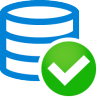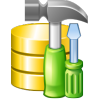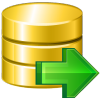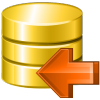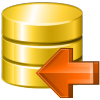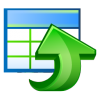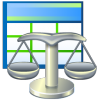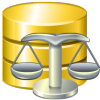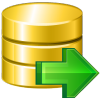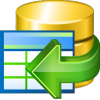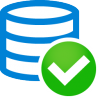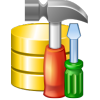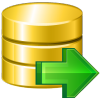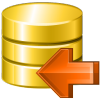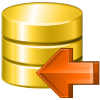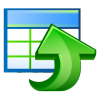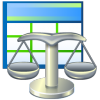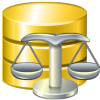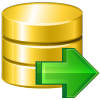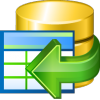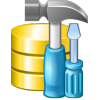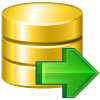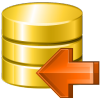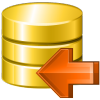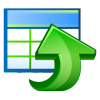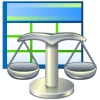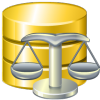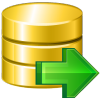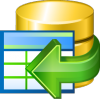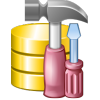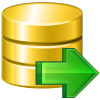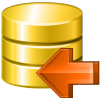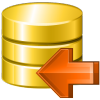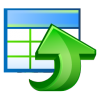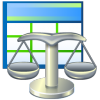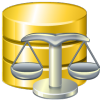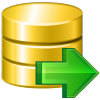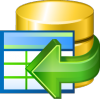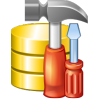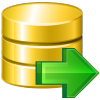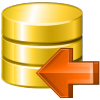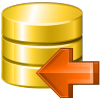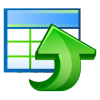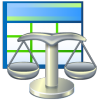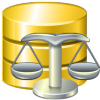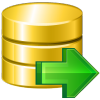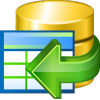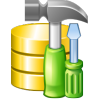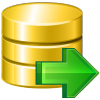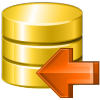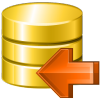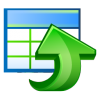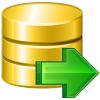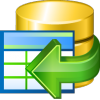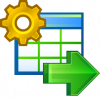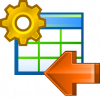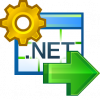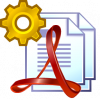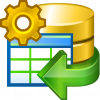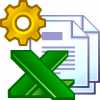About STUDIO
EMS SQL Management Studio is a complete solution for database administration and development. The STUDIO is an integrated suite of powerful database management tools united in one easy-to-use work environment. Developers will appreciate its ability to create/edit/drop any database objects and will find DB comparison, data export/import and test data generation tools extremely helpful. Database migration, BackUp and Restore tools will be of great help to DBAs. As will be the Scheduler that will automate a sizeable part of DBA's work.
In order to start working with the STUDIO you need to download the installation package here. Then run the installaton file on a MS Windows workstation. When the installation is finished, the program is ready to be used in the trial mode. You can evaluate the trial version for 30 days.This is the time for you to make a purchasing decision. You can purchase the STUDIO here. After the payment is complete your will receive your registration information by e-mail. On entering this information (Main Menu/Help/Register) your copy of the STUDIO will become a registered one.
DB registration and connection
On the first step:
Host is a host where Oracle server is located in point of view SSH server. If SSH and Oracle server are on the same machine, it is equal to SSH Host, or may be 'localhost'.
Port is a port of Oracle server on Remote Host, by default it is 1521
User Name is a Oracle user name.
Password is password of the Oracle user.
Please, note that Oracle host name should be set relatively to the SSH server in this case. For example, if both of Oracle and SSH servers are located on the same computer, you should specify localhost as Host name instead of server's external host name or IP address.
Please, do not forget to choose Use tunneling and SSH tunneling
On the second step:
SSH host name is a host where SSH server is activated.
SSH port is a port where SSH server is activated.
SSH user name is a user on Linux machine. (It is a Linux user. It is not a user of Oracle server.)
SSH password is a Linux user password.
To setup SSH connection correctly, input the following values to the corresponding fields:
On SSH page/tab:
SSH host name is a host where SSH server is activated.
SSH port is a port where SSH server is activated.
SSH user name is a user on Linux machine. (It is a Linux user. It is not a user of Oracle server.)
SSH password is a Linux user password.
On Connection properties/General page/tab:
Host is a host where Oracle server is located from the point of view of SSH server. If SSH and Oracle server are on the same machine, it is equal to SSH Host, or may be 'localhost'.
Port is a port of Oracle server on Remote Host, by default it is 1521
User Name is a Oracle user name.
Password is a password of the Oracle user.
Please note that Oracle host name should be set relatively to the SSH server in this case. For example, if both Oracle and SSH servers are located on the same computer, you should specify localhost as Host name instead of server's external host name or IP address.
Yes, the STUDIO allows to work with an unlimited number of databases at the same time. You can also operate with any number of databases via SSH tunneling. Once the database is registered at the database source repository correctly, you are ready to use it.
Yes, that is possible. It doesn't matter what OS the Oracle Server is under, the STUDIO works only in the Windows environment.
Object manipulation
The ‘DDL‘ tabs of the Table Editor and UDF Editor are read-only. They display the SQL text of the operations you carry over the table on the tabs ‘Fields‘, ‘Indices‘, etc, or over the UDF. To modify this text you can copy it to the clipboard and modify it using SQL Script Editor.
You probably have the "Autofit column widths" option enabled in the Grid tab of Options/Environment Options dialog. Try to disable it.
You can work with any objects in Oracle databases such as schemas, tables, fields, indices, keys, foreign keys, checks, views, procedures, functions, packages, package entries, package bodies, triggers, sequences, clusters, materialized views, materialized query tables, synonyms, database links, object types, object type bodies, array types, libraries, java sources, java resources, java classes, index types, operators, dimensions, contexts, users, roles, profiles, consumer groups, resource plans, directories, tablespaces, rollback segments, redo log groups, jobs.
For your convenience and to speed up your work Data Grid allows to customise many data display parameters. Here are the most important of them (accessible through "Options/Environment Options"):
At the Grid page:
- Limit options in table and view editors. The “Select all records of a table” option will enable you to see all table records without extra references to the server, yet in case of large tables or low speed connection channel the data may be fetched with huge delays and the incoming traffic might grow considerably. This mode is recommended when working with local databases or in a private network. The “Select only” mode restricts the maximum number of records returned after the query. Man can't process a massive amount of information at once. Hence, we came up with this mode. To request and display the next portion of data use the Next button in the Data Grid toolbar. This mode speeds up table data viewing considerably, prevents hanging and connection timeout. It is recommended to work with large tables, in case of low speed connection channels and when the traffic volume is of importance. This is a default mode. With this mode on the “Use SQL sorting” and “Use SQL filter” options come really helpful.
At the "Grid/Data Options" tab:
- Default Grid Mode. This option defines whether the requested rows will be loaded in the Grid all at once ("Load all rows"), or in parts ("Load visible rows") as the user scrolls down table data. The first mode increases the query opening time but speeds up scrolling. In the second mode the query opens very fast but there might be delays when navigating the grid.
- Use SQL sorting in data view. With this option enabled, when the user sets data sorting a new request is sent to the server, and the result is shown anew in the Grid. This option is very helpful with the “Select only” mode enabled, but it increases the traffic. When this option is disabled, the sorting is made on the client computer without any references to the server but only loaded data are sorted. That is, if you set "Select only 1000 records", then only these records will be sorted.
- Use SQL filer in data view. With this option enabled, the data will be sorted on the server to which a new request is sent, and the result will be shown anew in the Grid.
This option is also helpful when the “Select only” mode is on, but it insreases the traffic. When this option is disabled, the sorting is made on the client computer without any references to the server but only loaded data are sorted. That is, if you set "Select only 1000 records", then only these records will be sorted.
We recommend to set the following option values to achieve maximum efficiency when working with large tables:
- Select only – On
- Load visible rows – On
- Use SQL sorting – On
- Use SQL filter – On
Query
Yes, sure. The STUDIO can save the needed query to following ways:
1. ALL executed queries are automatically saved in the History. You can view the History and execute or edit any query you need.
2. You can add the frequently used queries to the list of favorite queries.
3. You can save any query as an SQL-script into file on your hard drive and load it when needed or execute it with a command line SQL script tool.
4. You can save your query with the chart. In this case after the query is loaded into STUDIO, the chart will be displayed the way it has been created.
5. the STUDIO allows to save the query chart as a bitmap image.
Report Designer
To get data source in a report you need to add a dialog form to the report (menu Edit/Add dialog form of Report Designer), then place database and query components from the left designer panel on it and set connection and query properties. Then the query appears in data source lists.
To create a report you can use the Create Report Wizard ("Create-->Report") or Report Designer Tool ("Tools/Report Designer"). To create a simple report based on the query you need to choose "Master Data band" on the second step of the wizard, double-click on it or click the Edit button and specify the query for your report. After that you need to tune the non-nesessary options in other steps of the wizard and press Finish.
To create a report based no the query you can use the Create Report Wizard. You need to choose the Create-->Report, then choose Master Data band on the second step of the wizard, doubleclick on it or click the Edit button and specify the query for your report. After that you need to tune the non-nesessary options in other steps of the wizard and press Finish.
Yes, open the report by double-clicking on it in the DB Explorer window and choose "Save report as" in the navbar or toolbar and specify the format you want to save to in the "Save as type" field.
Data manipulation
Right click on the database you need in DB Explorer and click on "Database Registration Info..." item in popup menu (you can also find this item in main menu "Database"). The Database Properties form will be opened.
Click on the Directories tab.
In the "Default Directory for Export Data" section you can choose the default directory for export file.
The main function of the console versions of STUDIO tools is execution of some service operations with the database without a user involved. All console tools support configurative files (templates) that are created in the corresponding GUI versions. The template file contains all information necessary for working with the tool's console version. With the help of console version and a template file you can create a task in the Task Planer and set the necessary time and/or period for execution. Of course, you can use the console versions of STUDIO tools in your own automatic applications.
We recommend that you use Microsoft Jet 4.0 OLE DB Provider to connect to your MS Access database.
ODBC (Open DataBase Connectivity) is an open standard interface to access databases developed by Microsoft. The most database management systems have their own ODBC driver or the one developed by other software producers.
To migrate from ODBC data source you need to use Data Pump for Oracle tool. You can start Data Pump from STUDIO by choosing Data Manipulation tab and then clicking on Data Pump for Oracle. Or go to Start->Programs->EMS->SQL Studio for Oracle->Data Pump for Oracle->Data Pump for Oracle.
When working with the utility you should use OLE DB Provider for ODBC Drivers to connect to your ODBC data source.
With the help of Data Pump for Oracle you can migrate from any databases to which you can connect over OLE DB Provider (for example SQL Server, MySQL, MS Access, DB2, etc.) and ODBC Driver (MySQL, PostgreSQL, Interbase, Firebird, dbase files, etc.)
Yes, of course. When generating test data, STUDIO takes into consideration all relations and restrictions that already exist in your database.
The Export/Import tools in STUDIO includes additional features, which are not available in SQL Manager for Oracle.
1. Export/Import data from/to several tables at once.
2. Export/import data from/to tables selected from different databases on one host.
3. Command line utility to automatically export/import data using the STUDIO scheduler.
4. A single registered database repository.
You can use Import Data Wizard for this purpose. It will help you to set all the necessary import parameters. Moreover, you can save these settings as a template and use them in the future. Besides CSV file you can also import from MS Excel, MS Access, DBF, XML and TXT files.
Fields of TEXT, LONGTEXT types are not exported by default. You should select these fields manually on the Fields tab.
Data analysis
Yes, for this purpose there are console versions of our utilities - DB Comparer for Oracle Console Application and Data Comparer for Oracle Console Application. All console tools support configuration files (templates) that are created in GUI versions of the programs. The template file contains all the infomation necessary for working with the console version of the tool. With the help of console version and the template file you can easily perform synchronization from a command line without setting a greate number of parameters manually.
There is a Database Comparer (DB Comparer) tool in STUDIO that can be used for this purpose. Its interface is simple and user-friendly, but the results of its work are quite impressive! You need only to choose two databases, whose metadata you would like to compare and set some additional parameters, such as database objects to compare, direction of synchronization and others. The result of DB Comparer's work will be a list of differences in the metadata of these two databases and a script, with the help of which you can synchronize the databases. Besides, you can synchronize each difference separately, using only the needed changes in the required order. Do you remember how much time you spent searching for the single field added to the table two months ago?
You shoulld start Data Comparer Wizard and specify the existing working database as a source database. Then specify database of the yesterday's backup as a target database (you should first restore it on any available Oracle server). Now choose data in which tables you would like to compare and follow the other steps of the wizard. Mind, that Data Comparer allows comparing data in tables with non-identical metadata. After the comparison is complete you will see the list of differences between your databases and will be asked if you would like to synchronize data from source to target or from target to source. You can save SQL script that performs synchronization in a separate file and run it later with the help of SQL Script tool (probably using the STUDIO Task Planer).
You can use DB Comparer for Oracle tool to synchronize the structure of your databases.
To launch DB Comparer from STUDIO, please, choose Data Analysis tab and click on DB Comparer for Oracle, or go to Start->Programs->EMS->SQL Studio for Oracle-> DB Comparer for Oracle-> DB Comparer for Oracle.
To synchronize the data, you can use Data Comparer for Oracle tool.
To launch Data Comparer from STUDIO, choose Data Analysis tab and click on Data Comparer for Oracle, or go to Start->Programs->EMS->SQL Studio for Oracle-> Data Comparer for Oracle-> Data Comparer for Oracle.
BackUP/Restore
SQL Studio offers several methods of creating database backups.
- Using Backup Database service
It can create a full or differential backup of a database. This method is very fast and reliable. While a backup is created, the users can continue their work with the database – the data integrity is ensured.
To call this service, open the Database Management tab in SQL Studio and select the Backup Database item of the Services group.
To call this service from SQL Manager for Oracle, use the Services | Backup Database... main menu item.
In order to restore the databases from the backup file created with this method, use the Restore Database service. This service enables you to restore your database to the file of the existing database or create a new database on the basis of the existing backup copy.
To call this service, open the Database Management tab in SQL Studio and select the Restore Database item of the Services group.
- Using DB Extract for Oracle or Extract Database Wizard of SQL Manager for Oracle
Both tools create backup copies of the whole database or of user-specified objects in the form of SQL script. The generated script contains Data Definition Statements and Insert Data commands. The main advantages of this method are the complete or partial backup of the database structure and data and flexible customization possibility. However, with this method creating back up copies of large databases is time and traffic consuming.
To call DB Extract, open the Data Analysis tab in SQL Studio and select DB Extract for Oracle.
To call Extract Database Wizard, open SQL Manager for Oracle and select the Tools | Extract Database main menu item.
In order to restore the database from the script, you need to run this script on the Oracle server. Please use SQL Script available in SQL Studio or SQL Script tool of SQL Manager for Oracle.
- Using Data Export for Oracle
This method can be used to back up data from any tables. Please use it if you need to save only data but not the database structure. We would recommend to use CSV format to back up data.
To call Data Export, open the Data Manipulation tab in SQL Studio and select Data Export for Oracle.
To call Data Export Wizard from SQL Manager for Oracle, open your table in Table Editor, proceed to the Data tab and select 'Export Data'.
In order to restore data from the file created with this method, you can use Data Import for Oracle or Data Import Wizard of SQL Manager for Oracle.
To learn about the differences between Data Import for Oracle and Data Import Wizard of SQL Manager for Oracle here.
Please observe the following cases:
- You can restore a backup file created with Backup Database service on any server that has the same or higher version than the one where this backup was created.
- You can restore a backup file created by DB Extract for Oracle or with the help of Extract Database Wizard of SQL Manager for Oracle on any server that has the same version where this backup was created.
- You can restore the data backed up with the help of Data Export for Oracle or Export Data Wizard of SQL Manager for Oracle to a table on any version of Oracle.
Backup Database service creates backups of all objects of the selected database, as well as table data, according to the defined path that can be only a local directory on the server.
DB Extract for Oracle or Extract Database Wizard of SQL Manager for Oracle creates backups of databases or user-defined objects in a form of SQL script. Thus, Backup Database service uses Oracle capabilities to create database backups, it is highly reliable, but it cannot place backup files in any client directory. It is recommended to use this method for backing up a whole database. The main advantages of creating backups with the help of DB Extract for Oracle are that you can save structure and data of some specific database objects or schemes and that backup copy is created on the client side. The weak point of this method is much time and traffic that are required for creating backups of large databases.
Template management
To create a template for the Import tool you should run the Import tool (Main Menu/Run/Data Import). Then you will need to fill in all the necessary import parameters using the Next button. A the last wizard step you should indicate where and under what name you would like to save the newly created template using button Tools/Save Template.
The Template Manager allows you to perform both operations: you can either delete a template from the registered template list only, or delete it also from the computer disk.
Scheduler
All the information on the Task execution is fixed in the log. You can find there not only the information on the Task, but also on the Steps it includes. Moreover, you can view the log file of the attachment excuted at a certain step. It is very convenient while analyzing the reasons of the Task/Step failure. The powerful log filters will allow you to display only selected records.
To solve such conflicts in every Task Step you can define its time-out. If a Step is being executed longer than it's defined in the time-out, the Step will terminate with the "by time-out" event, and the Task execution goes on according to the algorithm you set.
Yes, sure. The STUDIO Scheduler is intended exactly for such situations. The Scheduler can run for execution the tasks previously created by you. You can set the time and periodicity for the task execution. Each Task can include unlimited number of Steps (elementary operations). A Task must include at least one step. In your case you should perform the following:
1. Create new Task
2. Create 4 steps in the Task (Export, Import, BackUp, BackUp). When creating these steps you will need to indicate in what template files are the necessary tool parameters saved.
3. Create Scheduled Task in the Scheduler that will use the Task you've just created (1).
Yes. When creating/editing each Task Step you can define which step should go next. Moreover, for each of the three processed events (successful step termination, erroneous step termination, step termination by time-out) you can indicate a separate variant of next Task operations.
Log management
Yes. STUDIO has a convenient tool to work with log files. While creating a Step in the Task you can specify the location of the log file of application to be executed. When choosing the tools from STUDIO the location of the log file is filled automatically. Log files of the performed steps are saved in the internal STUDIO database and are availbale in the Navigation/Logs menu.


